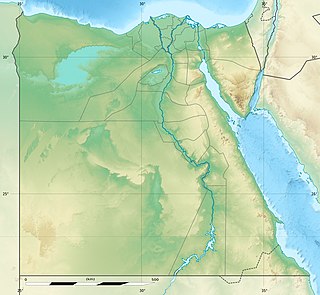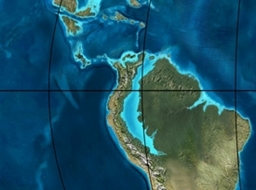 W
WAbanico Formation is a 3 kilometres (9,800 ft) thick sedimentary formation exposed in the Andes of Central Chile. The formation has been deposited in a timespan from the Eocene to the Miocene. Abanico Formation's contact with the overlying Miocene Farellones Formation has been the subject of differing interpretations since the 1960s. A small part of the formation crops out in the Mendoza Province of western Argentina.
 W
WThe Elko Formation, also known as Elko Shale(s), is an oil shale geologic formation in Elko County, northern Nevada, United States. The deltaic and lacustrine shales and limestones preserve fossils dating back to the Middle Eocene of the Paleogene to Middle Miocene of the Neogene period. The frog genus Elkobatrachus and ant species Pseudocamponotus elkoanus were named after the formation.
 W
WThe Geste Formation is a fossiliferous geologic formation of the Puna Plateau in the western Salta Province and northern Catamarca Province of the Argentine Northwest, northwestern Argentina.
 W
WThe Hoko River Formation is a Late Eocene marine sedimentary geologic formation. The formation is exposed in outcrops along the Strait of Juan de Fuca on the Olympic Peninsula in Washington state, USA. It is known for containing numerous fossils of crabs. It overlies the older Lyre Formation and underlies the younger Makah Formation.
 W
WLaguna Brava Formation, formerly referred to as Santo Domingo Formation, is a Late Eocene sedimentary formation located in the Argentine Northwest. The formation contains beds with fossil bird tracks described as Gruipeda dominguensis.
 W
WThe Langental Formation, also spelled as Langetal Formation, is a Late Eocene geologic formation cropping out in the Sperrgebiet, ǁKaras Region of southwestern Namibia. The siltstones and sandstones of the formation were deposited in a shallow marine environment. The Langental Formation was deposited under hot and humid conditions. The formation overlies the Silica Beds unit and is overlain by the Blaubok Conglomerate. The Langental Formation provides many fossil invertebrates and fish.
 W
WLoreto Formation is a sedimentary formation of Late Eocene age in the southernmost Magallanes Basin. It overlies the Leña Dura Formation and the contact with an overlying formation is not observed.
 W
WThe Macarao Formation is a geological formation of the Cocinetas Basin in the northernmost Colombian department of La Guajira. The formation consists of foraminifera-rich fine to medium grained calcareous sandstones intercalated with calcareous siltstones, cross-cut by veins of gypsum. The 253 metres (830 ft) thick Macarao Formation dates to the Paleogene period; Middle to Late Eocene epoch, corresponding to the Divisaderan in the South American land mammal ages (SALMA).
 W
WThe Popigai crater in Siberia, Russia, is tied with the Manicouagan Crater as the fourth largest verified impact crater on Earth. A large bolide impact created the 100-kilometre (62 mi) diameter crater approximately 35 million years ago during the late Eocene epoch. It might be linked to the Eocene–Oligocene extinction event.
 W
WThe Qasr el Sagha Formationis a geological formation located in Egypt The formation is part of the Wadi El Hitan World Heritage Site. The Qasr el Sagha Formation overlies the Birket Qarun Formation and is overlain by the Gebel Qatrani Formation. The sandstones and shales of the formation were deposited in a deltaic to shallow marine environment. It dates to the Late Eocene.
 W
WThe Regadera Formation (Spanish: Formación Regadera, E2r, Tpr) is a geological formation of the Bogotá savanna, Altiplano Cundiboyacense, Eastern Ranges of the Colombian Andes. The predominantly sandstone and conglomeratic formation, with pink shale beds intercalated, dates to the Paleogene period; Middle to Late Eocene epoch, and has a maximum thickness of 765 metres (2,510 ft).
 W
WThe Santiago Formation is a geologic formation in Orange and northwestern San Diego County, California. The siltstones, mudstones and sandstones of the formation preserve fossils of Walshina esmaraldensis, dating back to the Late Eocene to Late Oligocene periods.
 W
WThe Seca Formation is a Late Eocene geologic formation of the Progreso Basin in southwestern Ecuador. The shales of the formation have provided fossils of the marine snake Pterosphenus sheppardi.
 W
WThe Soncco Formation is a Late Eocene to Early Oligocene geologic formation in southern Peru. The base of the formation at the contact with the K'ayra Formation is dated using fission track analysis at 43 Ma and the top, the contact with the Punacancha Formation, at 30 Ma. In other places the Tinajani Formation overlies the Soncco Formation. The formation has a thickness of 1,600 metres (5,200 ft).
 W
WThe Tonosí Formation is a geologic formation in Panama. It preserves fossils dating back to the Paleogene period (Priabonian).
 W
WThe Usme Formation is a geological formation of the Bogotá savanna, Altiplano Cundiboyacense, Eastern Ranges of the Colombian Andes. The formation consists of a lower part with predominantly shales with intercalated sandstone beds and an upper sequence with sandstones and conglomerates. The Usme Formation dates to the Neogene and Paleogene periods; Late Eocene to Early Oligocene epochs, and has a maximum thickness of 300 metres (980 ft).